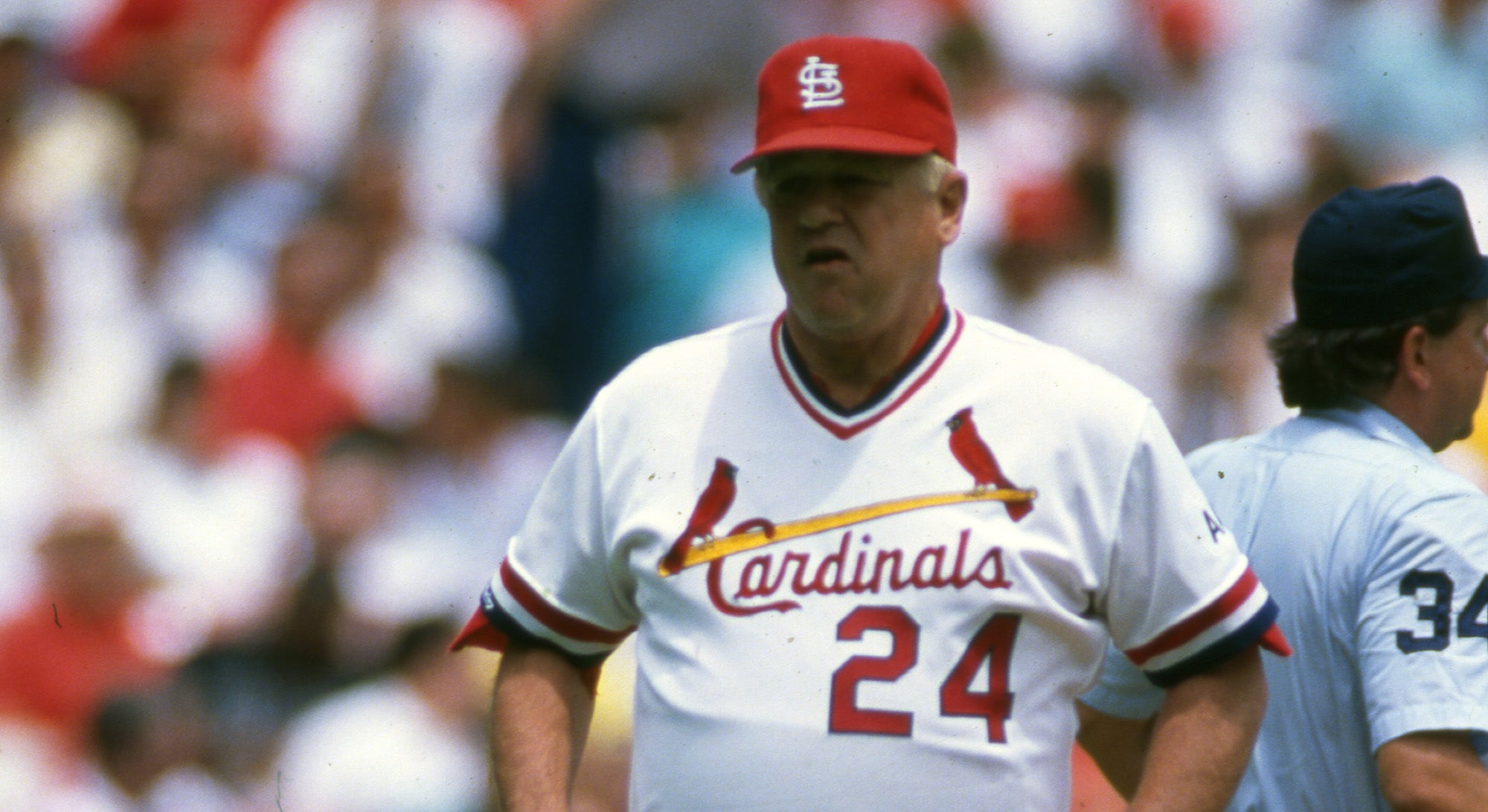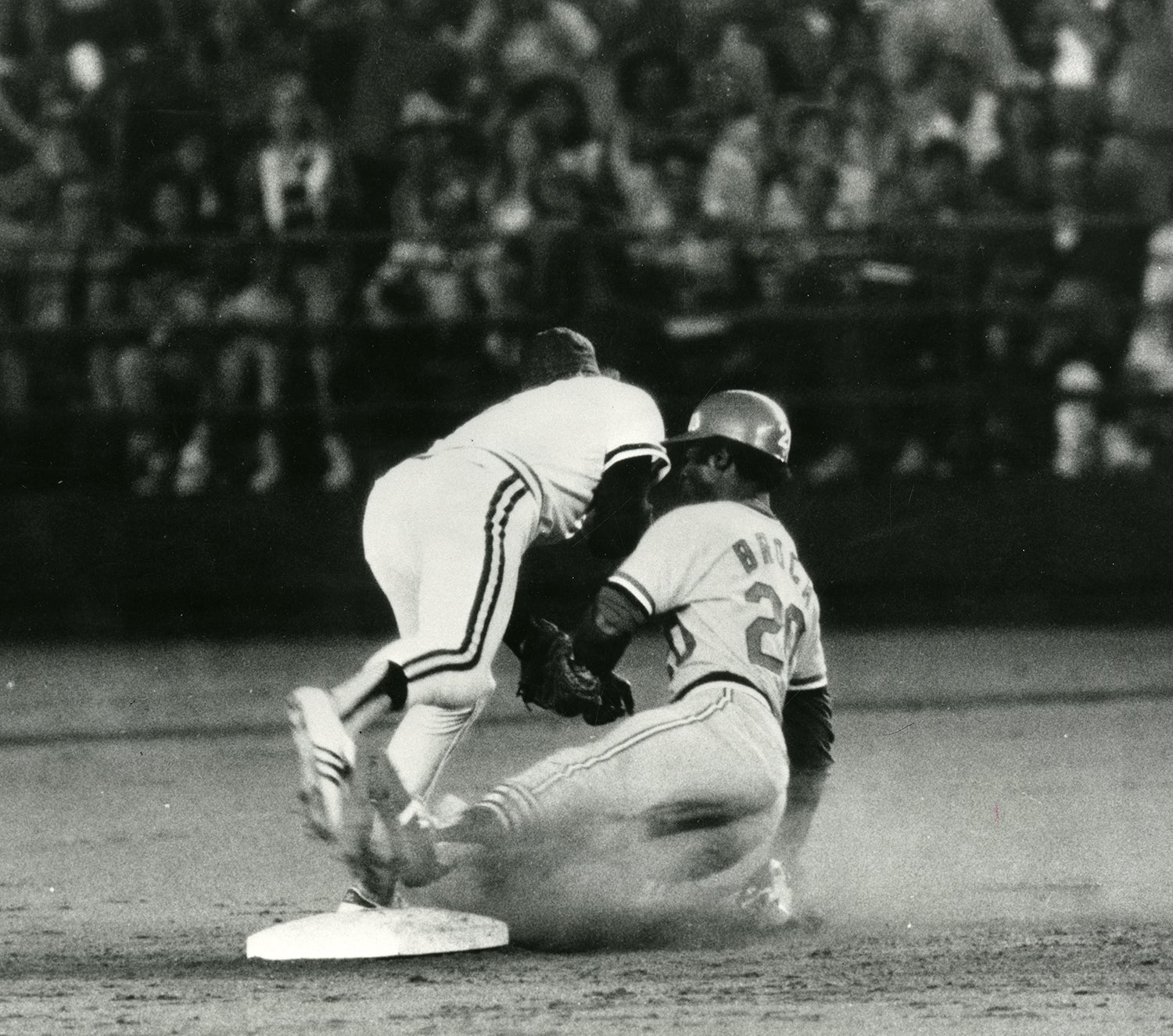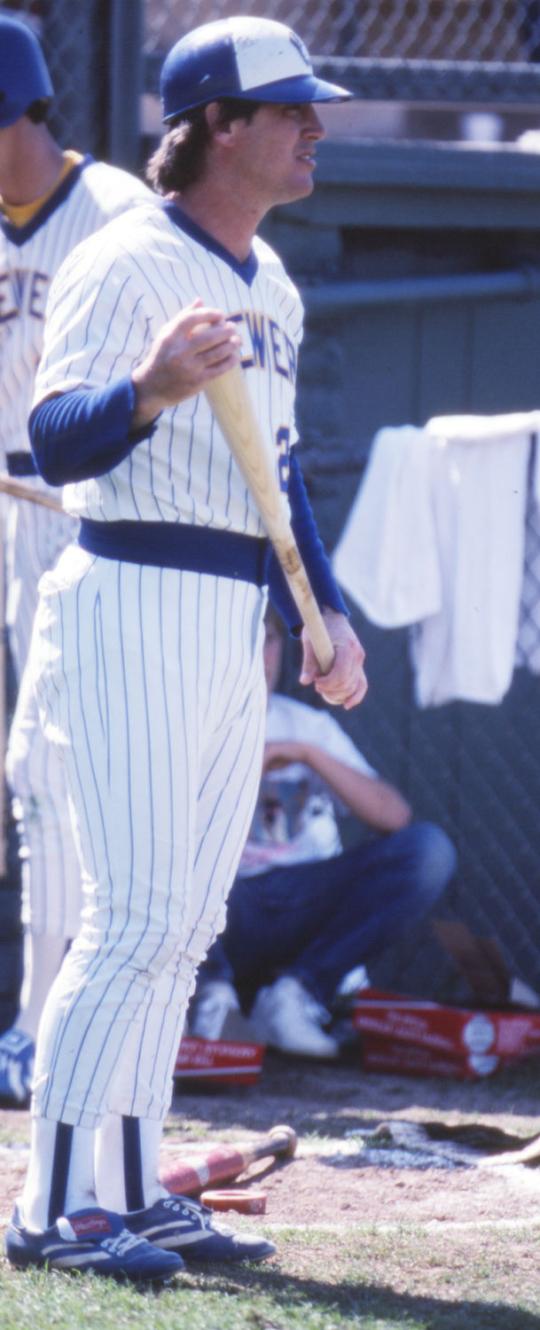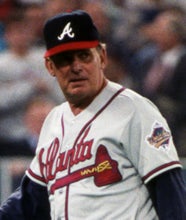- Home
- Our Stories
- Braves’ trade gives Simmons a chance to return to NL
Braves’ trade gives Simmons a chance to return to NL
At 37 years of age, Ted Simmons was no longer concerned with the status of his big league contract.
What mattered to the eight-time All-Star – as he approached his 19th big league season – was for whom he was playing. So when the Atlanta Braves brought Simmons back to the National League on March 5, 1986, the match of player and team was virtually perfect.
“I never thought I’d have to opportunity to go back to the National League,” Simmons told the Atlanta Constitution on the day he was traded. “I never thought I’d have the opportunity to play for a manager like (Braves skipper) Chuck Tanner. It was a matter of having an opportunity I never really thought I’d have.”
After five seasons in Milwaukee with the Brewers, Simmons was dealt to the Braves in exchange for Rick Cerone and two minor leaguers. As a 10-and-5 player – having 10 seasons in the big leagues and the last five with the same team – Simmons could have vetoed the trade or used his status to try to extract more money from the teams.
But Simmons – coming off a rebound season where he hit .273 with 12 homers and 76 RBI as the Brewers’ primary designated hitter – was ready for a change of scenery.
“The 10-and-5 situation did not become a factor in his arrangement,” Simmons said. “When this development presented itself, it was not a matter of leverage as far as I was concerned.
“Without the DH, I don’t see how I can play more. (But) I can (pinch hit) from either side and drive in runs. I can catch some, play first base and provide an established leadership role.”
Over the next three seasons, the switch-hitting Simmons played in between 73 and 78 games per year, hitting a combined .248 with 10 homers and 66 RBI in 411 at-bats – with the majority of his games coming as a pinch hitter. The Braves were in the early stages of assembling the roster that would comprise their 1990s dynasty, and Simmons would serve as a mentor for many of those players.
“He’s a sharp, intelligent player,” said Bobby Cox, who was beginning his first full season as Braves’ general manager when he made the trade. “The key is his ability to hit. He can still hit.”
Simmons could always hit, going back to his days with the Cardinals when he was one of the most productive catchers in the game’s history. He hit better than .300 in seven full seasons – all coming when he was primarily a catcher – topped the 20-homer mark six times and recorded at least 90 RBI in eight seasons.
His 193 hits in 1975 were the most of any catcher who caught at least 150 games in a season, and his 192 hits in 1973 rank second on that same list.
By the time he retired following the 1988 season, Simmons had amassed 2,472 hits and 1,389 RBI while walking more often (855) than he struck out (694). His 182 National League home runs were the most ever by an NL switch hitter at the time of his retirement.
Before the month of October ended in 1988, Simmons had taken a job as the director of player development for the Cardinals – beginning his second career as a baseball executive.
“When this opportunity came, the decision (to retire) was made,” Simmons told the Associated Press. “It all started right here (St. Louis). This is where I began. This is where my life changed.”
Simmons was elected to the Hall of Fame in 2020.
Craig Muder is the director of communications for the National Baseball Hall of Fame and Museum
Related Stories
Simmons awed by legends, history during Orientation Visit at Hall of Fame
Cox climbs rankings with win No. 1,600

Herzog's blockbuster trades reshape Cardinals, Brewers

Lou Brock of the Cardinals steals his 893rd career base
Simmons awed by legends, history during Orientation Visit at Hall of Fame
Cox climbs rankings with win No. 1,600

Herzog's blockbuster trades reshape Cardinals, Brewers





